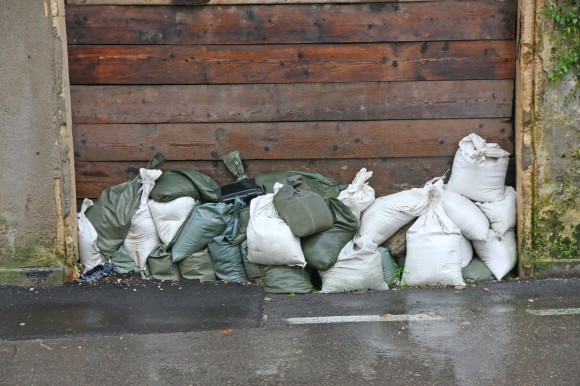Approximately 10% of low-income and immigrant New Yorkers live in areas with basement apartments that are at high risk of flooding, according to a report released by the Federal Reserve Bank of New York.
The report,”Flood Risk and Basement Housing in New York City: The Impact of Extreme Weather on Vulnerable Housing Stock,” finds that the highest flood risk to basement housing is concentrated in south and east Brooklyn, south Queens, the east coast of Staten Island, and the East Bronx.
The census tracts with the highest flood risk overall for low-income renters include the same areas, as well as East Harlem and the Lower East Side of Manhattan, according to the authors, research analysts Ambika Nair and Claire Kramer Mills.
The authors estimate that in areas at risk of major to severe flooding, there are potentially 4,078 basement units that are likely to house low-and-moderate income renters.
Brooklyn Zoo Re-Opens After Being Closed for 239 Days Due to Flood
The report also shows that neighborhoods adjacent to some flood-prone areas could provide additional viable basement housing. About 40% of low-and moderate-income and immigrant New Yorkers live in low flood risk areas that could be used for additional viable basement housing but the authors express concern that these may face gentrification pressures as nearby neighborhoods contend with more frequent floods.
The authors conclude that the findings have value as cities assess where to encourage future housing density. They contend that in assessing viable basement housing stock and future housing development, it is important to account for inland and coastal flooding, the rent burden, and the vulnerability of low-and-moderate income residents, immigrant, and minority populations.
New York Drying Out After Record Rainfall
“The confluence of extreme weather, severe housing shortages, and public safety means it is increasingly important to understand which neighborhoods’ basement apartments are at risk,” the report says.
The report notes that Hurricane Ida exposed the risks to inhabitants of low-lying units. Ida, which struck New York in September 2021, was responsible for the deaths of 11 people in basement homes and caused $7.5 billion in damage to homes and infrastructure across the state.
Severe rainstorm events like Ida are expected to continue to threaten low-lying housing stock. A recent analysis by First Street Foundation estimated that one in nine residents, including in populous regions of the Mid-Atlantic and the Texas Gulf Coast, is at “significant risk” of downpours that deliver at least 50% more rain per hour than can be drained by local infrastructure, including pipes and sewage systems.
The report builds on earlier New York Fed research and comes after the release of a separate white paper on the impact of flooding on New Yorkers’ household finances.
Also, last November, the Federal Reserve Bank of New York began a blog series on the economic and financial impacts of extreme weather events. The Liberty Street Economics series will cover: physical and transition risks, flood risks, the impact of extreme weather events on small business owners and low- and moderate-income communities, and the impact of hurricanes.
Topics New York
Was this article valuable?
Here are more articles you may enjoy.



 US P/C Insurers Post Best Q1 Underwriting Result In 17 Years
US P/C Insurers Post Best Q1 Underwriting Result In 17 Years  As Rates Rise, Majority of Homeowners Say Insurance Industry Is in Crisis: Survey
As Rates Rise, Majority of Homeowners Say Insurance Industry Is in Crisis: Survey  ‘Great Resignation’ Enters Third Year as Workers Embrace AI, Upskilling, PwC Says
‘Great Resignation’ Enters Third Year as Workers Embrace AI, Upskilling, PwC Says  Ford Recalls 668,000 2014 F-150 Pickup Trucks Over Transmission Issue
Ford Recalls 668,000 2014 F-150 Pickup Trucks Over Transmission Issue 

